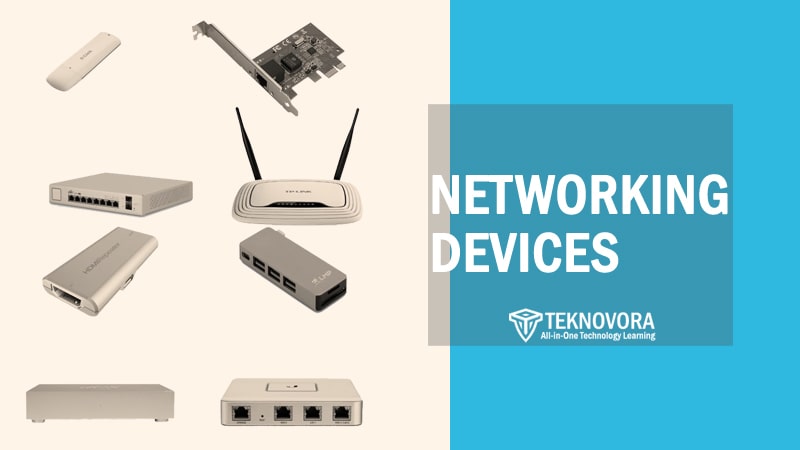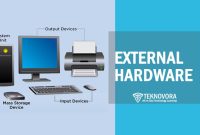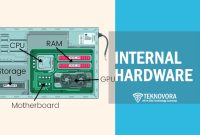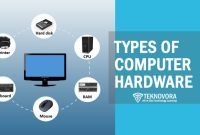Every time you send an email, stream a movie, or connect to Wi-Fi at a café, you’re relying on a network of devices working silently in the background. These devices form the backbone of digital communication, enabling computers, smartphones, servers, and other systems to talk to each other—locally or across the globe. Without Networking devices, our modern internet-powered world simply wouldn’t function.
Networking devices play a critical role in establishing, managing, and securing connections between multiple endpoints in a network. Whether it’s a router directing internet traffic in your home, a switch distributing data in an office, or an access point enabling wireless connectivity in public spaces, each device serves a specific and indispensable purpose.
What Are Networking Devices?
Networking devices are physical hardware components used to connect computers and other electronic devices within a network, enabling them to communicate, share data, and access shared resources. These devices can manage, direct, amplify, or convert data signals—making them fundamental to any network infrastructure, whether in homes, offices, schools, or global internet systems.
At their core, networking devices serve one or more of the following purposes:
- Establishing connectivity between devices (e.g., routers, switches)
- Managing data flow across networks (e.g., hubs, bridges)
- Converting data formats for compatibility (e.g., modems)
- Expanding access to network resources (e.g., access points, repeaters)
They are the unseen facilitators of everything from video conferencing and cloud storage to smart home automation and e-commerce systems.
Core Functions of Networking Devices
| Function | Description |
|---|---|
| Data Transmission | Moving data packets between devices or networks |
| Signal Routing | Directing data along optimal paths (e.g., via routers) |
| Data Switching | Forwarding data to specific devices in a local network (e.g., via switches) |
| Protocol Handling | Supporting IP, DHCP, DNS, and other protocols for communication |
| Access Control | Managing user or device permissions on the network |
Each networking device is typically designed to perform one or more of these functions, often using specific protocols or standards like TCP/IP, Ethernet, Wi-Fi (IEEE 802.11), and Bluetooth.
Networking Devices vs. Computers: A Role Comparison
While computers process and store data, computer network devices enable data to move between systems. Here’s a quick comparison:
| Aspect | Computer | Networking Device |
|---|---|---|
| Primary Role | Data processing and storage | Data transmission and connectivity |
| Operates Individually? | Yes | Functions as part of a network |
| User Interface | Keyboard, display, OS | Typically configured via web interface |
| Examples | Laptop, desktop, server | Router, switch, modem, access point |
In short, computers generate and use data, while networking devices make communication between them possible.
Main Categories of Networking Devices
Networking devices come in various forms, each tailored to handle specific aspects of communication within a network. While there are many individual types, they generally fall into three main categories: passive, active, and hybrid devices. Understanding these categories is essential for building or managing any network—from a simple home setup to a complex enterprise infrastructure.
Passive Networking Devices
Passive devices do not manipulate the signal in any way. They simply provide a physical path for data to travel through. These devices have no processing capability; their main role is to support the connectivity structure of the network.
Examples:
- Patch Panel: Organizes and connects multiple network cables.
- Network Jack or Outlet: Fixed point for plugging in Ethernet cables.
- Ethernet Cable (as medium): Transmits data between devices without signal processing.
While they don’t alter or manage data, passive devices are critical for organizing, routing, and maintaining physical network integrity.
Active Networking Devices
Active devices require electrical power to operate and process the data signals that pass through them. They are intelligent devices that perform tasks such as signal amplification, routing, data switching, and traffic management.
Examples:
- Router: Directs traffic between networks (e.g., between your local network and the internet).
- Switch: Forwards data to specific devices within a local network.
- Modem: Modulates and demodulates signals between analog lines and digital systems.
- Repeater: Amplifies and regenerates signals to extend network reach.
These devices are essential in ensuring that data reaches the correct destination reliably and efficiently.
Hybrid Networking Devices
Hybrid devices combine the functionalities of both active and passive components—or perform multiple networking roles simultaneously. They’re common in modern setups where space and simplicity are prioritized.
Examples:
- Modem-Router Combo: Provides both internet access (modem) and local traffic management (router).
- Layer 3 Switch: Combines the features of a switch (Layer 2) and a router (Layer 3).
- Wireless Router with Access Point: Delivers routing capabilities and wireless access in one unit.
Hybrid devices are especially popular in consumer-grade environments but are also found in more complex network infrastructures due to their efficiency.
Comparison Table: Passive vs Active vs Hybrid Devices
| Category | Signal Processing | Power Required | Common Examples | Role in Network |
|---|---|---|---|---|
| Passive | No | No | Patch panel, Ethernet cable | Physical connectivity |
| Active | Yes | Yes | Router, switch, modem, repeater | Data control, routing, and signal |
| Hybrid | Yes (multi-role) | Yes | Modem-router combo, Layer 3 switch | Combined functionality |
Common Types of Networking Devices and Their Functions
Networking devices serve distinct purposes within a network architecture. Each device plays a specialized role—whether it’s directing traffic, filtering data, connecting multiple endpoints, or extending network coverage. Understanding these devices and how they function individually and collectively is crucial to building and maintaining efficient, secure networks.
Router

A router is a core networking device that connects multiple networks together and forwards data packets between them. It is most commonly used to bridge a local network (LAN) to the internet (WAN).
Function:
- Determines the best path for data to travel
- Assigns local IP addresses using DHCP
- Performs NAT (Network Address Translation) to allow multiple devices to share one public IP
- Often includes firewall and QoS (Quality of Service) capabilities
How It Works:
When you connect to Wi-Fi at home, your router assigns your laptop an IP address, sends your requests to the internet, and returns the correct data—whether it’s a website, video, or cloud service. Routers use routing tables and dynamic protocols (e.g., RIP, OSPF, BGP) to determine the fastest, most efficient path for data.
Common Use:
- Home networks
- Office LANs
- Enterprise edge routing
- ISPs (Internet Service Providers)
Real-World Examples:
- TP-Link Archer AX55
- Cisco RV340
- Netgear Nighthawk AX series
Switch
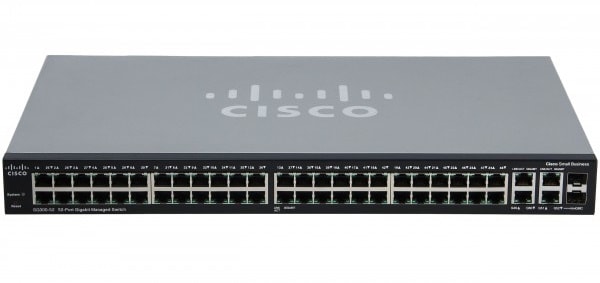
A switch is used to connect multiple devices within the same network (typically a LAN). Unlike a hub, which simply broadcasts data to all ports, a switch is intelligent—it only sends data to the specific device that needs it.
Function:
- Connects multiple endpoints (e.g., PCs, printers) in a LAN
- Uses MAC address tables to direct traffic to the correct port
- Supports full-duplex communication (simultaneous send/receive)
- Can be unmanaged or managed (with VLANs, port control, QoS, etc.)
How It Works:
When a device sends data, the switch inspects the data packet, determines the destination MAC address, and routes the packet directly to the intended port, conserving bandwidth and reducing collisions.
Common Use:
- Office networks
- Data centers
- Network segmentation and performance tuning
Real-World Examples:
- Cisco Catalyst 1000 Series
- Ubiquiti UniFi Switch
- Netgear ProSAFE GS108
Hub
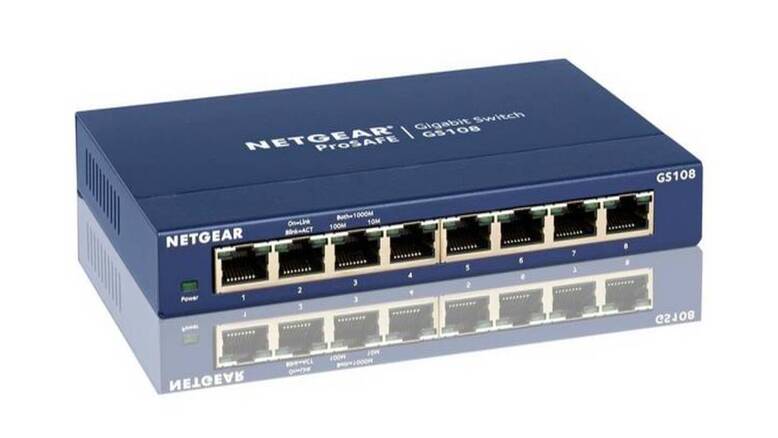
A hub is a basic networking device that connects multiple devices in a LAN but does not manage traffic direction intelligently. It broadcasts incoming data to all connected devices, regardless of the intended destination.
Function:
- Acts as a central connection point in small networks
- Sends data to all ports simultaneously (unicast not supported)
- No data filtering or management
How It Works:
When a device sends a data packet to a hub, the hub duplicates that packet and sends it to every other port—hoping the intended recipient picks it up. This often causes network congestion and collisions, which is why hubs are mostly obsolete.
Common Use:
- Legacy networks
- Educational labs (for demonstration purposes)
- Temporary network testing
Real-World Examples:
- D-Link DE-805TP
- TP-Link TL-SF1008D
Modem

A modem (short for modulator-demodulator) converts analog signals from your ISP into digital signals your computer or router can use—and vice versa. It’s the gateway between your home/office and the wider internet.
Function:
- Converts analog to digital (modulation/demodulation)
- Interfaces with ISP (via cable, DSL, or fiber)
- Authenticates connection to your service provider
How It Works:
When you load a webpage, your request is sent digitally to the modem. The modem converts it into an analog signal for the ISP. When the ISP replies, the modem demodulates it back into a digital format for your devices.
Common Use:
- Home and office internet access
- Connecting routers to ISPs
- Integrated with routers in combo units
Real-World Examples:
- Motorola MB7621 (Cable modem)
- ARRIS SURFboard SB6183
- Netgear CM500
Repeater

A repeater amplifies and retransmits network signals to extend coverage. It’s especially useful in large buildings or areas with poor signal quality.
Function:
- Regenerates and boosts weakened signals
- Extends range of wired or wireless networks
- Maintains signal integrity across long distances
How It Works:
Repeaters receive the original signal, regenerate it, and transmit a stronger version of the signal to continue its path. This ensures that data reaches devices that are far from the source or blocked by obstacles.
Common Use:
- Large homes and offices
- Outdoor Wi-Fi coverage
- Fiber or Ethernet extensions
Real-World Examples:
- TP-Link RE705X
- Netgear Nighthawk X6S EX8000
Bridge

A bridge is used to connect and filter traffic between two different network segments—often combining or isolating them for performance or security reasons.
Function:
- Connects two LANs that use the same protocol
- Filters traffic using MAC addresses
- Reduces network collisions and congestion
How It Works:
A bridge examines incoming frames and decides whether to forward or block them based on MAC addresses. It maintains a forwarding table to determine which segment a device belongs to.
Common Use:
- Splitting large networks into segments
- Connecting wired and wireless segments
- Bridging old and new infrastructure
Real-World Examples:
- Netgear WGE101
- Software-based bridges in Linux/Windows
Access Point (AP)

An Access Point allows wireless devices to connect to a wired network using Wi-Fi. It acts as a bridge between wireless and wired devices.
Function:
- Extends wireless network coverage
- Connects wireless clients to a wired LAN
- Supports multiple SSIDs and security protocols (WPA2, WPA3)
How It Works:
An AP connects to a router or switch via Ethernet and emits a wireless signal that nearby devices can join. Enterprise APs often support roaming, VLANs, and mesh networking.
Common Use:
- Offices, schools, public buildings
- Large homes requiring multiple coverage zones
- Hospitality and enterprise networks
Real-World Examples:
- Ubiquiti UniFi AP
- Cisco WAP581
- TP-Link EAP225
Gateway

A gateway connects two different networks that use different protocols. It serves as a translator between network architectures—especially between private networks and external systems like the internet.
Function:
- Protocol conversion (e.g., TCP/IP to ATM)
- Data packet translation and filtering
- Acts as a default exit point from the local network
How It Works:
When a packet leaves a private network destined for an external network (like the internet), it passes through a gateway, which repackages it to meet the destination’s protocol requirements.
Common Use:
- Connecting LANs to WANs or the internet
- VPN services and firewalls
- Voice over IP (VoIP) and industrial control systems
Real-World Examples:
- Cisco Meraki MX Series
- Software gateways (OpenVPN, pfSense)
Summary Table: Types of Networking Devices and Their Functions
| Device | Key Function | Smart/Passive | Common Usage |
|---|---|---|---|
| Router | Connects networks, assigns IPs | Smart | Home, office, ISP |
| Switch | Connects devices in LAN using MAC | Smart | LANs, data centers |
| Hub | Broadcasts data to all devices | Passive | Legacy or educational setups |
| Modem | Converts analog <-> digital signals | Smart | ISP connection |
| Repeater | Extends signal range | Smart | Wi-Fi/rural/large buildings |
| Bridge | Connects network segments | Smart | Segment management |
| Access Point | Wireless connectivity via Wi-Fi | Smart | Expanding network coverage |
| Gateway | Connects networks using different protocols | Smart | WAN to LAN, protocol conversion |
How Networking Devices Work Together in a Network
In a functioning network—whether it’s a small home setup or a large-scale enterprise system—networking devices don’t operate in isolation. Each device performs a specific task, and together they form a cohesive communication ecosystem that enables data to move efficiently, securely, and accurately between endpoints.
The Flow of Data in a Typical Network
Let’s break down a common scenario of how data travels from your laptop to the internet and back:
- You open a browser and type in a website address.
- The device sends a request to the router, which acts as the central point of contact for your network.
- The router forwards that request to the modem, which converts it into a format that your ISP understands.
- The modem sends the request out to the internet via the ISP’s infrastructure.
- The website server responds, and the data returns through the modem and router, which directs the traffic to your device’s IP.
- If your laptop is on Wi-Fi, that signal passes through an access point before reaching the router.
Behind the scenes, switches may connect all the wired devices on your LAN, and gateways may translate protocol layers if necessary. This orchestrated communication ensures seamless browsing, streaming, or gaming—all in milliseconds.
Example: Home Network Setup
| Device | Role in Home Network |
|---|---|
| Modem | Connects to the ISP and provides internet access |
| Router | Distributes internet to all devices and manages IPs |
| Switch | Expands the number of wired connections (optional) |
| Access Point | Broadcasts Wi-Fi to wireless devices |
| Repeater | Extends Wi-Fi coverage to dead zones |
Example: Small Business Office Network
| Device | Role in Office Network |
|---|---|
| Modem | Interfaces with business internet provider |
| Firewall/Gateway | Secures traffic and filters packets |
| Router | Connects LAN to WAN and manages traffic |
| Managed Switch | Segments network with VLANs and QoS |
| Access Points | Provide Wi-Fi for laptops, tablets, guests |
| Bridge | Connects different network segments |
Network Layers and Device Roles
Networking devices also work in alignment with the OSI Model (Open Systems Interconnection)—a conceptual framework that defines how data travels through a network.
| OSI Layer | Relevant Device(s) | Function |
|---|---|---|
| Layer 1 (Physical) | Hub, Repeater, Cables | Transmits raw bits |
| Layer 2 (Data Link) | Switch, Bridge | MAC addressing, local frame delivery |
| Layer 3 (Network) | Router, Gateway | IP addressing, path selection |
| Layer 4-7 | Firewalls, Proxies, Application Servers | Session handling, encryption, application filtering |
While end-users rarely see this complexity, network administrators rely on this model to design and troubleshoot infrastructure logically.
Integration and Coordination
Key takeaways in how networking devices cooperate:
- Routers manage and route traffic between different networks.
- Switches manage traffic within a network.
- Modems connect your network to the internet.
- Access Points and Repeaters provide and expand wireless coverage.
- Gateways and Bridges help connect different types of networks.
In modern systems, many devices are integrated. For example, home routers often function as a modem, access point, switch, firewall, and DHCP server all in one.
Wired vs Wireless Networking Devices
The world of networking devices is broadly divided into two categories based on how data is transmitted: wired and wireless. Both types serve similar purposes—enabling connectivity and communication—but they differ significantly in terms of speed, installation, flexibility, and performance. Understanding these differences is essential when designing or upgrading a network.
Wired Networking Devices
Wired networking devices use physical connections, usually via Ethernet cables (CAT5e, CAT6, or CAT7), to transmit data between devices. This setup provides a stable, interference-free connection and is commonly used in environments where speed and reliability are critical.
Characteristics:
- Uses RJ45 connectors and Ethernet ports
- Offers higher bandwidth and lower latency
- Less susceptible to interference or signal loss
- Requires cable management and physical infrastructure
Common Wired Devices:
- Switches: Connect multiple devices on a LAN using Ethernet.
- Routers (wired LAN ports): Provide physical access points for desktop PCs, printers, etc.
- Modems (via coaxial or Ethernet): Connect home/office to ISP networks.
- Bridges: Connect two wired network segments.
- Patch Panels: Organize and route wired connections in enterprise setups.
Advantages:
- Faster and more consistent performance
- More secure from outside interference or hacking
- Ideal for data-intensive tasks (e.g., video editing, gaming, server operations)
Limitations:
- Less mobility—devices must be physically connected
- Installation can be labor-intensive and less flexible
- Not ideal for mobile devices or dynamic office layouts
Wireless Networking Devices
Wireless networking devices transmit data using radio frequency (RF) signals, most commonly through Wi-Fi standards like 802.11ac, 802.11ax (Wi-Fi 6), or Bluetooth. These devices are essential for modern convenience and mobile computing.
Characteristics:
- Data sent through air (RF spectrum)
- Uses antennas, radio transceivers, and wireless protocols
- Allows flexible positioning and mobility
- Signal strength affected by distance, walls, and interference
Common Wireless Devices:
- Wireless Routers: Combine router, switch, and wireless access point.
- Access Points (APs): Extend wireless coverage in large areas.
- Repeaters/Extenders: Boost weak Wi-Fi signals.
- Wireless Bridges: Connect two wired segments over a wireless link.
- Wi-Fi Adapters: Enable wireless capability on non-wireless devices.
Advantages:
- Greater flexibility and mobility
- Easier to install in complex or temporary environments
- Ideal for mobile devices (phones, tablets, laptops)
Limitations:
- Potential for signal interference or security risks
- Slightly lower speeds than wired connections
- Coverage can vary based on obstacles and interference
Comparison Table Wired vs Wireless Networking Devices
| Feature | Wired Devices | Wireless Devices |
|---|---|---|
| Connection Medium | Physical cables (Ethernet, fiber) | Radio frequency (Wi-Fi, Bluetooth) |
| Installation | Requires structured cabling | Easier to set up, fewer cables |
| Speed & Stability | High and consistent | Moderate to high, can fluctuate |
| Mobility | Limited—fixed locations | High—ideal for mobile use |
| Security | More secure, harder to intercept | Vulnerable to eavesdropping if unsecured |
| Use Cases | Offices, servers, gaming rigs | Homes, classrooms, public hotspots |
When to Use Each
- Use wired when performance, latency, and security are top priorities—such as in data centers, professional workstations, or gaming environments.
- Use wireless when flexibility, convenience, and mobility are more important—like in homes, cafes, or mobile offices.
Often, the best solution combines both: use wired for stationary high-performance needs, and wireless for mobile convenience.
Industrial vs Consumer Networking Devices
Not all networking devices are created equal. While they may perform similar functions, the design, capacity, reliability, and configurability of industrial-grade versus consumer-grade networking devices differ substantially. Choosing the right type depends on the environment, performance expectations, and scale of the network.
Consumer-Grade Networking Devices
Consumer devices are designed for ease of use, affordability, and simplicity. They are ideal for home environments or small offices with fewer connected devices and minimal configuration requirements.
Characteristics:
- Plug-and-play setup
- Integrated functions (e.g., modem + router + switch)
- Limited customization and control
- Lower throughput and port counts
- Basic security and firmware options
Common Devices:
- Wireless routers
- Unmanaged switches
- Wi-Fi extenders
- Entry-level firewalls or gateways
Typical Use Cases:
- Homes
- Small home offices (SOHO)
- Freelancers and remote workers
Examples:
- TP-Link Archer A7
- Netgear Orbi Mesh System
- Linksys EA7500
Industrial/Enterprise-Grade Networking Devices
Enterprise-grade networking devices are built for performance, scalability, redundancy, and security. These devices are engineered to handle large volumes of data, support hundreds or thousands of concurrent connections, and offer advanced configurability.
Characteristics:
- High-speed ports (e.g., 10GbE, SFP+)
- Redundant power supplies
- CLI and web-based configuration
- Support for VLANs, QoS, SNMP, and load balancing
- Enhanced security (VPN, firewall, intrusion detection)
Common Devices:
- Layer 3 managed switches
- Enterprise firewalls
- Wireless controllers and access points
- High-throughput routers and gateways
Typical Use Cases:
- Corporations
- Data centers
- Educational institutions
- Internet service providers (ISP)
- Cloud environments
Examples:
- Cisco Catalyst Series
- Ubiquiti UniFi Dream Machine Pro
- Fortinet FortiGate Firewall
Comparison Table: Consumer vs Industrial Networking Devices
| Feature | Consumer-Grade | Industrial/Enterprise-Grade |
|---|---|---|
| Target Environment | Home, SOHO | Offices, campuses, ISPs, data centers |
| User Configuration | Minimal (auto or app-based) | Extensive CLI, VLAN, QoS, firewall rules |
| Performance | Moderate (100 Mbps–1 Gbps) | High (up to 10/40/100 Gbps) |
| Scalability | Limited | Highly scalable and modular |
| Redundancy | None | Supported (dual power, failover, etc.) |
| Cost | Low to moderate | High, but built for longevity |
Choosing the Right Grade
- Choose consumer-grade devices if your needs are simple: a few devices, internet browsing, streaming, or light gaming.
- Choose enterprise-grade devices if your network requires stability under load, remote access management, multiple VLANs, or data-sensitive operations like financial transactions or healthcare data transfer.
Compatibility, Configuration, and Management
Effective use of networking devices goes beyond plugging in cables and powering up routers. For a network to function securely and efficiently, its components must be compatible, properly configured, and consistently managed. This section explores how these three elements impact overall network performance and reliability.
Device Compatibility
Compatibility ensures that all devices within a network can communicate without conflict. Incompatibility can result in poor performance, connection drops, or complete failure to transmit data.
Key Factors for Compatibility:
- Communication Protocols: Devices must support the same standards (e.g., TCP/IP, IPv4 vs IPv6).
- Speed Matching: A 1 Gbps switch connected to a 100 Mbps router will throttle performance.
- Connector Types: Fiber optics, RJ45 Ethernet, coaxial cables, and SFP+ modules must be compatible.
- Power Requirements: Devices using Power over Ethernet (PoE) require PoE-enabled switches or injectors.
Example:
Connecting a Wi-Fi 6 access point to a legacy 100 Mbps switch will underutilize the AP’s potential.
Configuration Best Practices
Configuration is the process of setting up a device’s software or firmware to function within your network’s structure. Misconfigured devices can lead to IP conflicts, security holes, or inefficient routing.
Basic Configuration Steps (for most devices):
- Assign IP addresses (static or dynamic)
- Enable security protocols (WPA3, MAC filtering)
- Configure VLANs and QoS (Quality of Service)
- Update firmware
- Rename SSIDs and change default passwords
Advanced Configuration (Enterprise):
- Load balancing and failover
- Access Control Lists (ACLs)
- SNMP for network monitoring
- Firewall rules and VPN setup
Tools for Configuration:
- Web GUI dashboards (e.g., TP-Link, Netgear)
- Command Line Interface (CLI) for enterprise gear (e.g., Cisco IOS)
- Mobile apps for quick home device setup
Centralized Network Management
For businesses and large-scale networks, manual device configuration isn’t scalable. That’s where centralized management comes into play.
Benefits:
- Monitor device health and traffic from one interface
- Push firmware updates remotely
- Deploy or replicate configuration templates across multiple sites
- Automate alerts for downtimes or breaches
Common Tools:
- Cisco DNA Center
- Ubiquiti UniFi Controller
- Netgear Insight
- Open-source tools like Zabbix, PRTG, or Nagios
Summary Table: Compatibility vs Configuration vs Management
| Element | Description | Tools/Methods |
|---|---|---|
| Compatibility | Ensures physical and logical connection between devices | Protocol matching, cabling standards |
| Configuration | Sets functional rules for behavior and performance | Web GUIs, CLI, setup wizards |
| Management | Enables visibility, control, and maintenance | Network controllers, monitoring tools |
Common Pitfalls to Avoid
- Using outdated firmware, which exposes security vulnerabilities
- Mixing incompatible Wi-Fi standards (e.g., 802.11n with 802.11ax) without proper configuration
- Not isolating guest networks, leading to potential internal access
- Failing to change default login credentials, a major security risk
- Neglecting VLANs, causing broadcast storms in large networks
Security Considerations for Networking Devices
As the backbone of digital communication, networking devices are prime targets for cyberattacks. Whether it’s a small home router or a large-scale enterprise firewall, each device represents a potential entry point into your network. Securing these devices is not optional—it’s essential.
Why Network Device Security Matters
Compromised networking devices can:
- Serve as gateways for malware or ransomware attacks
- Allow attackers to intercept or manipulate data
- Expose internal systems and sensitive user information
- Be hijacked for use in botnets (e.g., DDoS attacks via IoT devices)
Even a single vulnerable router or access point can compromise an entire network, especially in environments with minimal segmentation.
Common Threats to Networking Devices
| Threat | Description |
|---|---|
| Default Credentials | Hackers exploit unchanged factory usernames/passwords |
| Outdated Firmware | Bugs or exploits in older software leave devices exposed |
| Open Ports & Protocols | Unnecessary services (like Telnet, UPnP) can be exploited |
| Man-in-the-Middle (MitM) | Data intercepted between two devices |
| Evil Twin Attacks | Fake access point mimicking a legitimate one |
| Packet Sniffing | Data monitoring via unsecured traffic |
| DDoS Attacks | Devices hijacked and used to flood other systems |
Best Practices for Securing Networking Devices
1. Change Default Login Credentials
- Always replace default usernames/passwords with strong, unique credentials.
- Use two-factor authentication (2FA) where supported.
2. Keep Firmware Updated
- Regularly check for and apply firmware updates to patch vulnerabilities.
- Enable auto-update if available (especially for routers and firewalls).
3. Disable Unused Services
- Turn off services like Telnet, WPS, or UPnP unless necessary.
- Close unnecessary open ports using firewall rules.
4. Use Strong Encryption
- For Wi-Fi networks, use WPA3 (or at least WPA2) encryption.
- Avoid older protocols like WEP, which are easily cracked.
5. Segment Your Network
- Separate guest networks from internal resources.
- Use VLANs to isolate departments or device types in enterprise settings.
6. Enable Logging and Monitoring
- Track login attempts, configuration changes, and unusual traffic spikes.
- Integrate logs with SIEM (Security Information and Event Management) systems if applicable.
7. Employ Physical Security
- Restrict physical access to networking devices.
- Lock server/network rooms and use tamper-proof enclosures for routers and switches.
Secure Configuration Checklist
| Action | Recommended? |
|---|---|
| Change default admin credentials | Yes |
| Enable WPA3 encryption | Yes |
| Disable WPS and UPnP | Yes |
| Keep firmware regularly updated | Yes |
| Use strong passwords for SSID access | Yes |
| Segment internal and guest networks | Yes |
| Enable firewall and intrusion detection | Yes |
Enterprise-Grade Security Features
For large organizations or sensitive environments, many advanced features are available in business-class devices:
- Deep Packet Inspection (DPI): Analyzes traffic content for threats.
- Intrusion Prevention Systems (IPS): Blocks suspicious activities in real time.
- Geo-IP Filtering: Blocks traffic from specific countries or regions.
- VPN Integration: Secures remote connections to the internal network.
- Role-Based Access Control (RBAC): Limits configuration access to authorized users only.
Conclusion
Networking devices are the invisible engines that keep the digital world connected. From routers that direct internet traffic to switches that organize internal communication, each device plays a crucial role in ensuring that data flows securely, efficiently, and reliably. Whether you’re managing a small home setup or a complex enterprise infrastructure, understanding how these devices work—and how they work together—is key to building a robust, high-performing network.
Choosing the right networking hardware involves balancing performance, scalability, security, and budget. But even the most advanced device is only as effective as how it’s configured, maintained, and protected. By applying best practices in compatibility, configuration, and security, you not only optimize network performance but also safeguard it against evolving digital threats.
As network demands continue to grow with the rise of cloud computing, remote work, and Internet of Things (IoT) devices, the importance of reliable, secure, and scalable networking hardware will only increase. Investing time in understanding these devices now will ensure your systems remain resilient and future-proof.
FAQ About Networking Devices
What are the 7 common networking devices?
The seven most common networking devices include:
Router, Switch, Hub, Modem, Repeater, Bridge, and Access Point. Each plays a unique role in managing and facilitating data transfer within a network.
What device connects a network to the internet?
A modem connects your local network to your Internet Service Provider (ISP), while a router distributes that connection to other devices within your network.
What is the difference between a router and a switch?
A router connects multiple networks and handles internet access, IP assignments, and traffic routing. A switch, on the other hand, connects multiple devices within the same network and manages local data flow using MAC addresses.
Are hubs still used in modern networks?
No, hubs are largely obsolete. They broadcast data to all devices, leading to inefficient bandwidth use and security risks. Switches have replaced them in nearly all modern network setups.
What are managed vs unmanaged switches?
Managed switches offer features like VLANs, port monitoring, and QoS configuration.
Unmanaged switches are plug-and-play, designed for basic connectivity without advanced controls.

